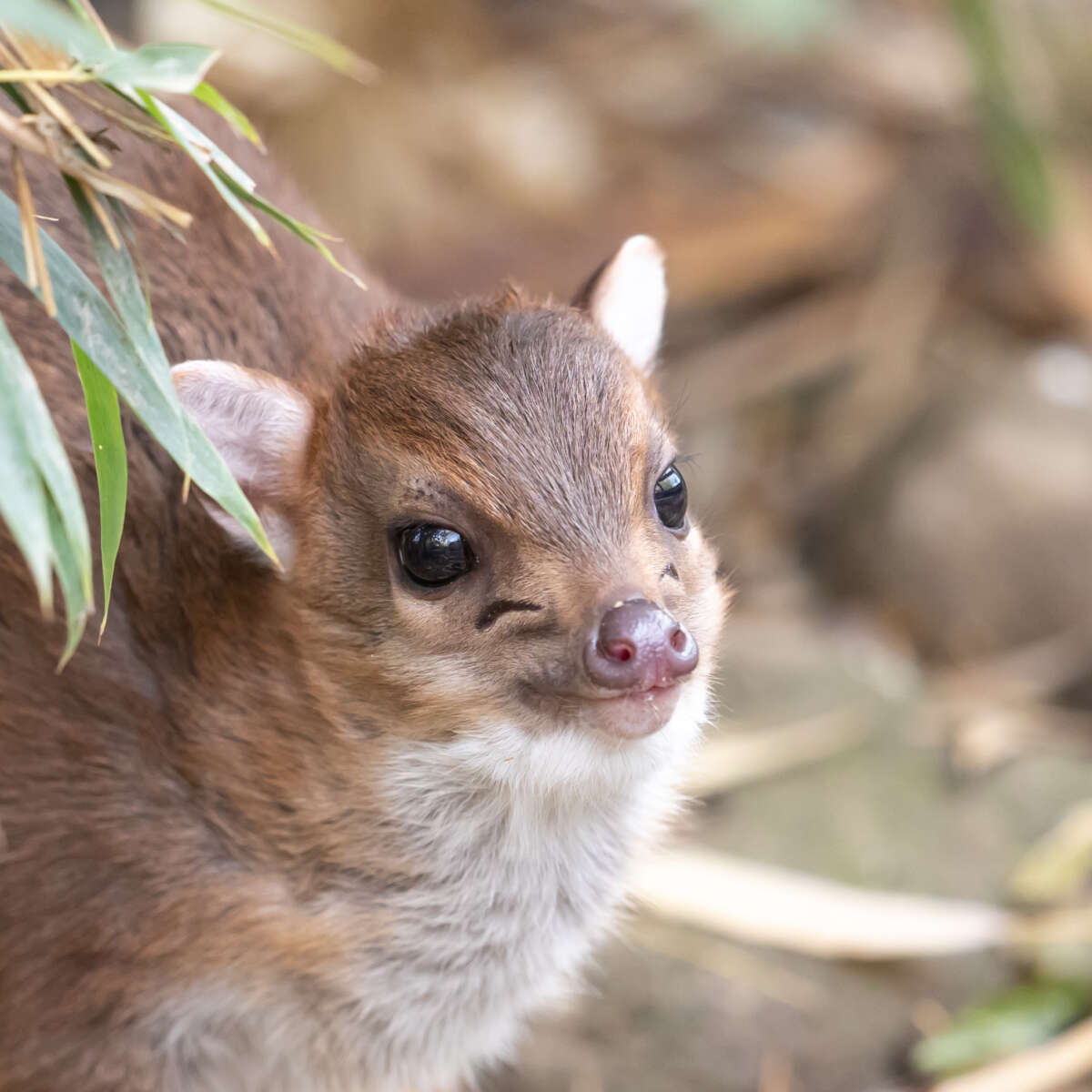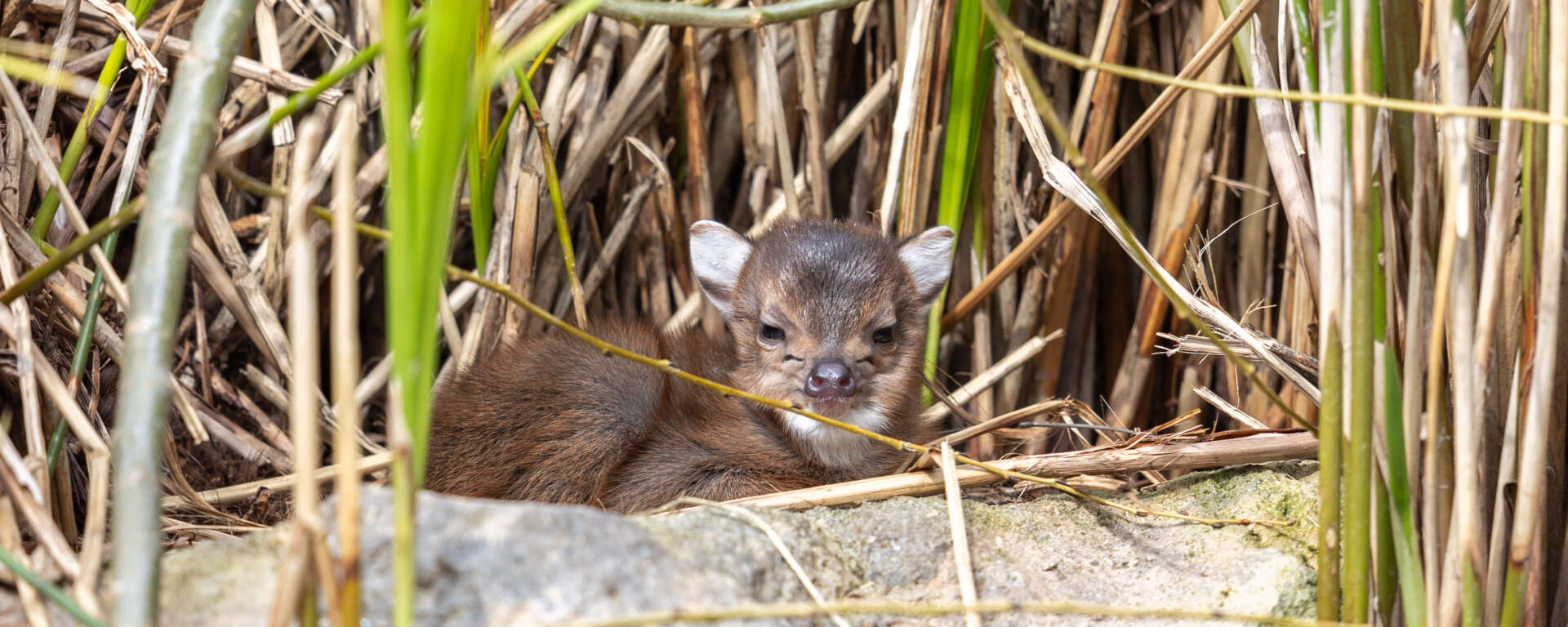Safari Spotlight: The Blue Duiker
Posted in: Safari Spotlight
When walking through the massive aviary at the heart of Safari West, if you’re very lucky you may catch a flash of brown fur moving between patches of dense foliage. What was that? A new species of hairy bird? A jackalope? A baby bigfoot? Sadly, while the existence of these animals has not been confirmed, the adorable and elusive mammals living alongside our birds are very real, and they are called blue duikers!
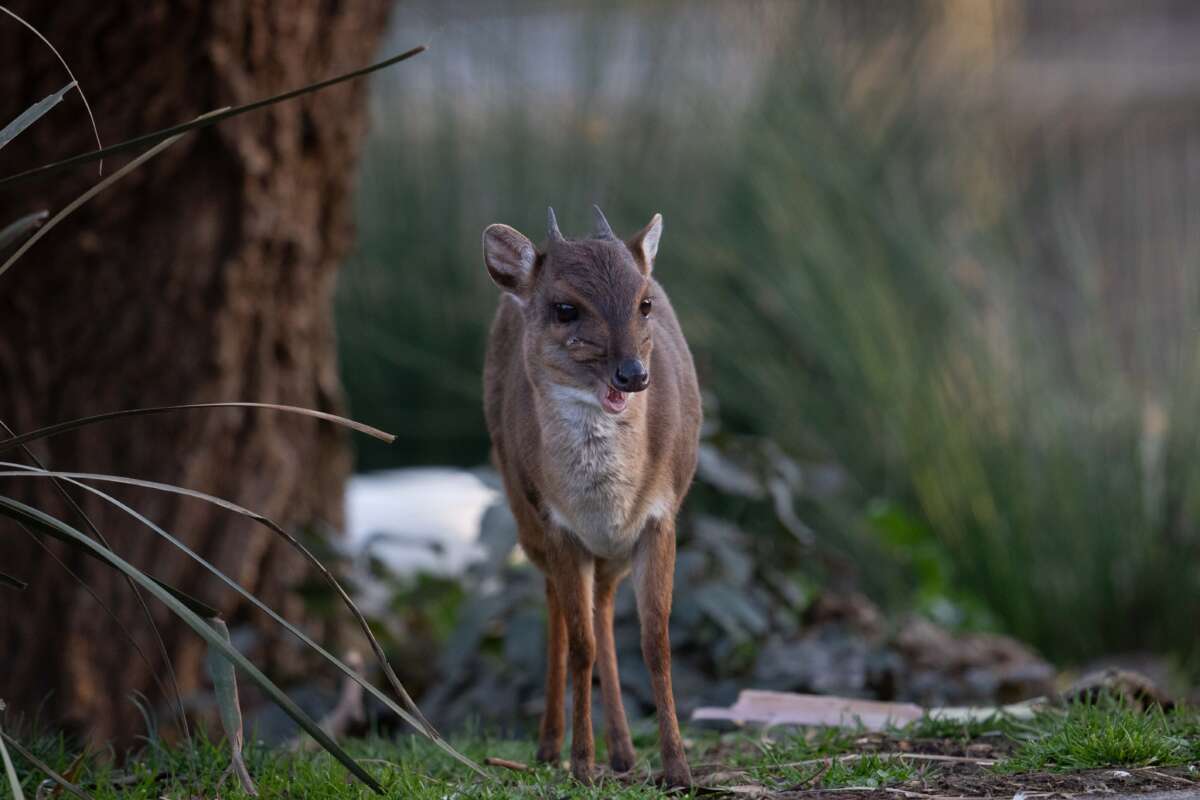
The first two questions almost everybody has about the blue duiker are:
- Is that a baby?
- Why is it living here with the birds?
To answer the first question: that is probably not a baby! While blue duikers have been born at Safari West over the years (see photos below), due to their small size adults are often mistaken for babies. Blue duikers are not quite the smallest antelope in the world—that prize goes to the royal antelope—but they are close! Fully grown adults typically weigh only about 8 – 12 lbs. One of the goals of Safari West is to educate about the incredible diversity of African wildlife, and between blue duikers and our herd of common eland, which is one of the largest antelope species with individuals weighing more than 2000 lbs, we have representatives from both ends of the incredible size spectrum of African antelope. Blue duiker babies are usually around 10% of their mother’s weight, so a 10 lb blue duiker would give birth to a tiny 1 lb baby. These newborn babies are rarely seen, even by staff members, as the mother will stash her baby extremely well until it is a few weeks old. The pictures of young blue duikers I’m sharing in this article are all of individuals that are at least a few weeks old.
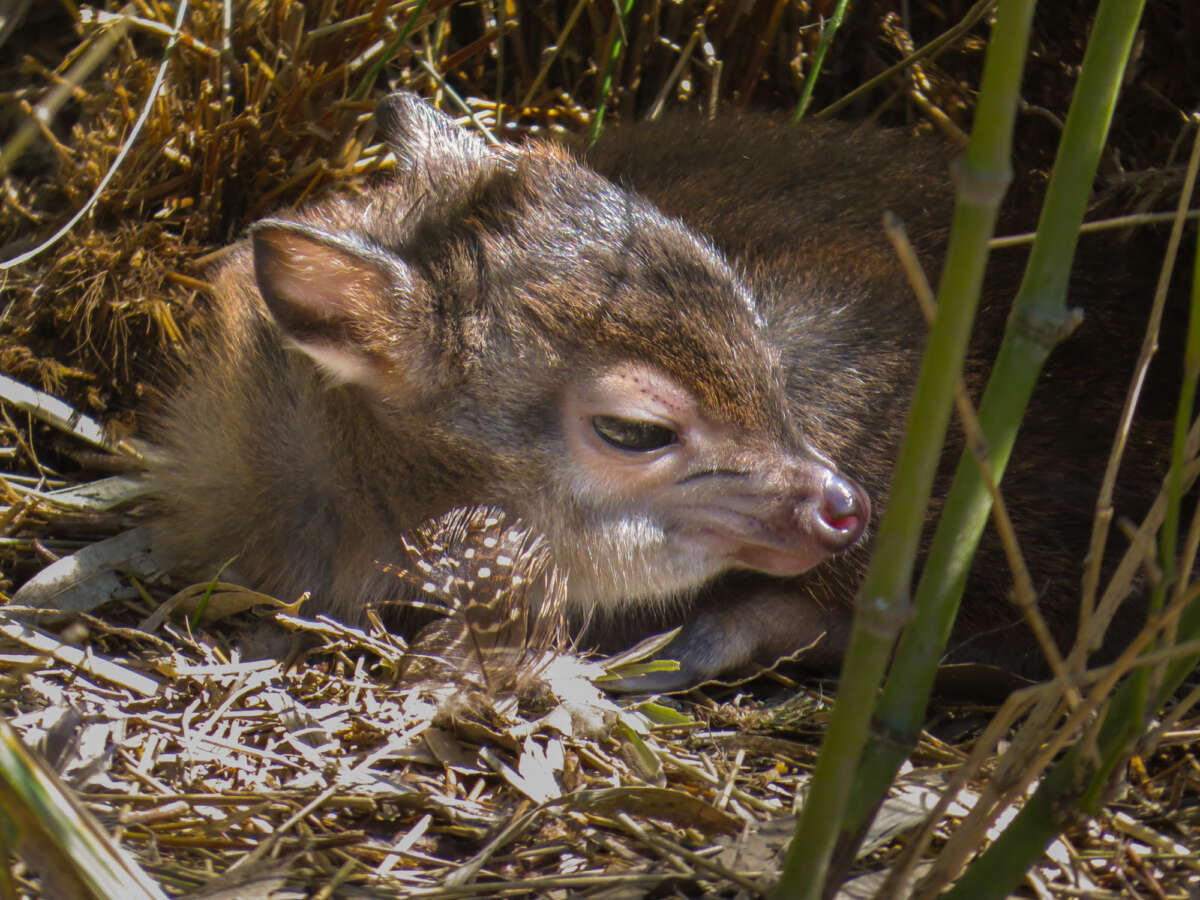
A 2 – 3 week old baby duiker
As for the second question—why are there mammals in our bird aviary—the simple answer is that the aviary is the perfect habitat for blue duikers! The name “duiker” is a Dutch Afrikaans word meaning “diver”, which refers to duikers’ tendency to dive into dense cover when startled. The wide open habitats that our larger antelope species love would not work well for blue duikers, but the diverse terrain with lots of thick clumps of vegetation to hide in our aviary is perfect for the duikers here. We are also big believers in the enrichment that animals experience when living in mixed-species habitats, and living with dozens of bird species is certainly an enriching experience! We’ve even seen some birds attempt to groom the duikers they live with, with debatable success.
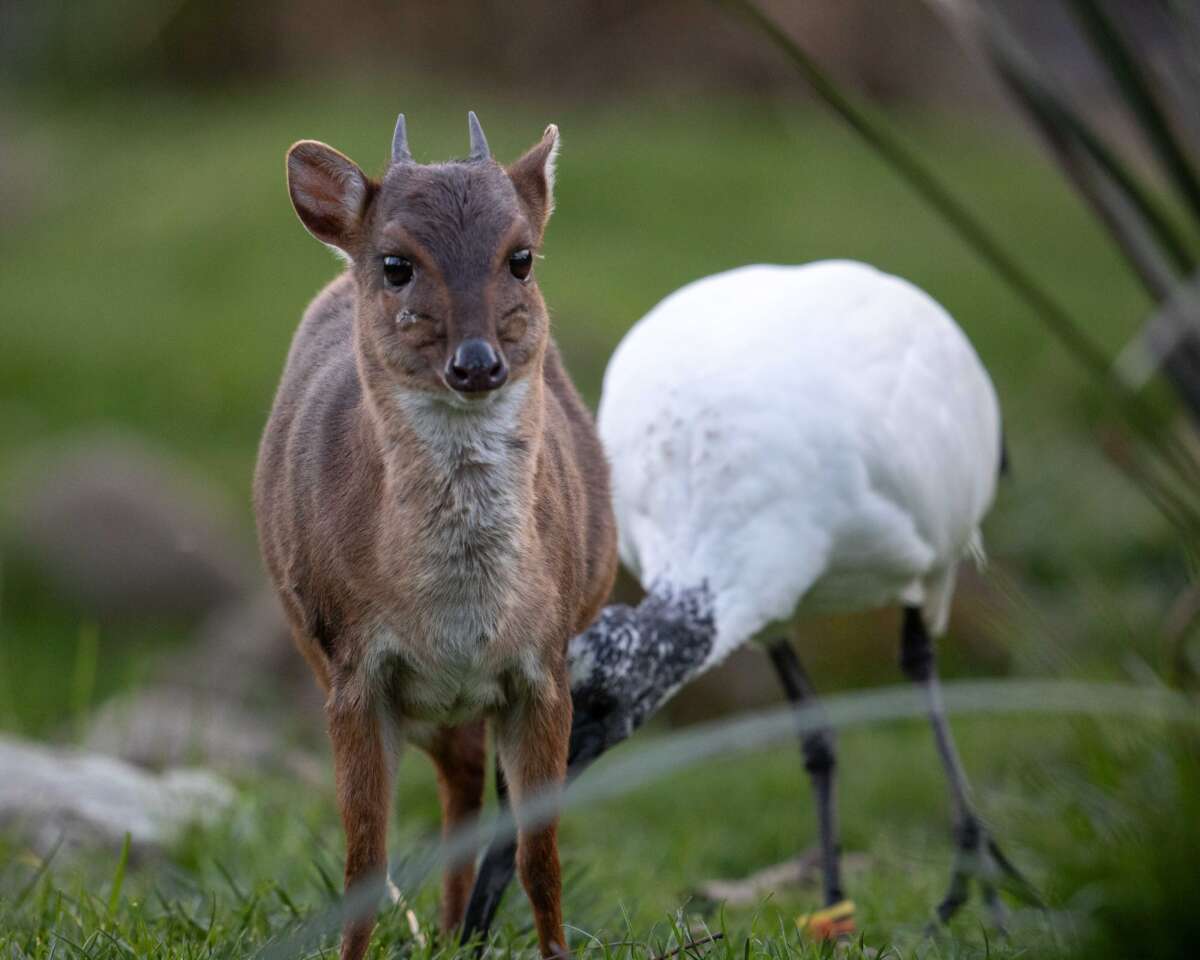
A young sacred ibis poking around beneath a blue duiker
One more unique characteristic of blue duikers that is hard to see unless you can look at a close-up portrait are the grooves on each cheek, beneath the eye. These are scent glands! They will secrete a gooey substance that blue duikers will rub on rocks and trees to mark their territory and to communicate with other duikers.
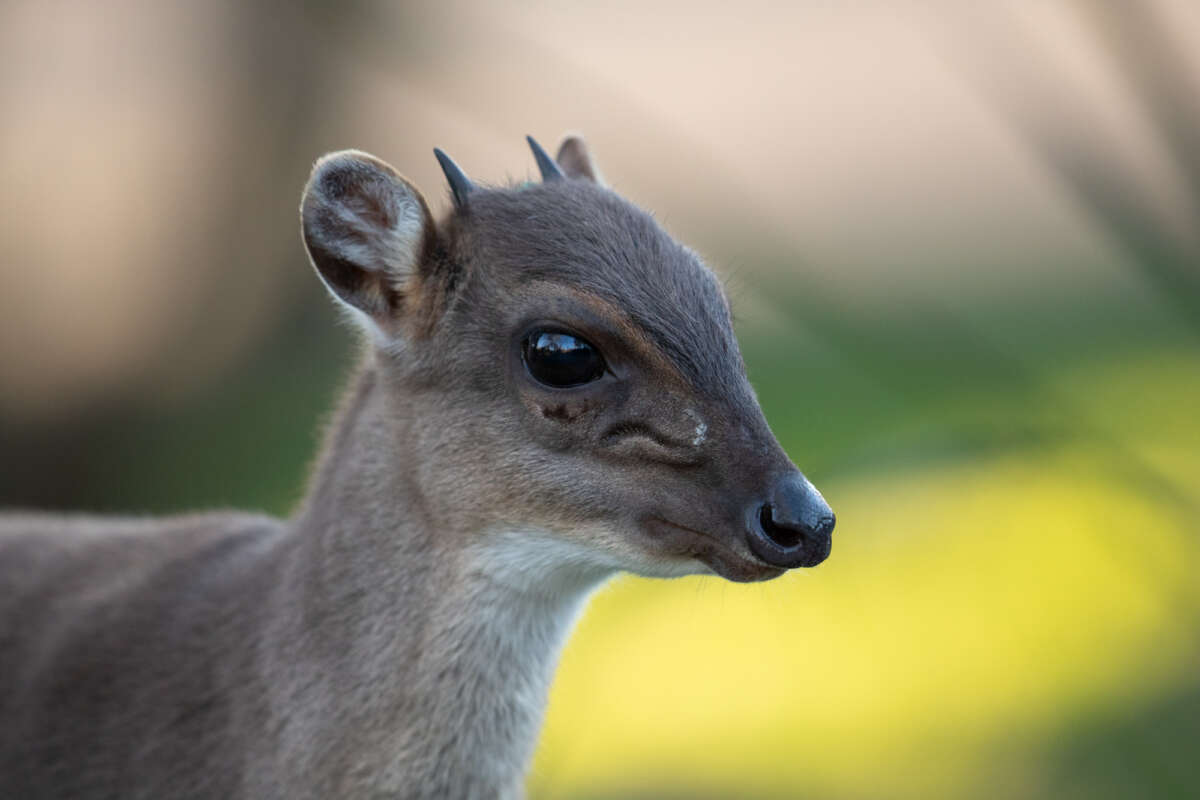
Check out those scent glands!
We hope you enjoyed this peek into the secretive life of the blue duiker! Next time you’re walking through the aviary at Safari West, keep your eyes peeled—with some luck you’ll spot one yourself!
